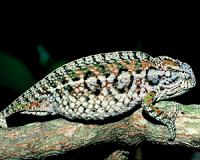| . |  |
. |
Lunugamwehera, Sri Lanka (AFP) May 17, 2010 In the early hours of a hot dry day, four orphaned elephants begin a bumpy truck ride back to the jungles of southern Sri Lanka where they had been rescued from near certain death. The four baby jumbos -- now aged five and six -- are ready to leave the Elephant Transit Home where they have been treated and cared for since they were less than a year old. The state-run home is refuge for dozens of baby elephants who are separated from their herds, fall into wells or ditches or are shot at by angry farmers as they raid banana, rice and sugarcane farms for food. A one-hour drive takes Ollie, Toledo, Zicasso and Rani to the release site deep inside the Lunugamwehera national park. To rid them of human odour, they are hosed with elephant dung mixed in water. The wildlife department staff clasp their hands in prayer while a saffron-robed Buddhist monk chants blessings for the elephants' future. At first they seem surprised by the lack of fences, but soon lumber off into the undergrowth. The release is a special day for the carers and conservationists, who hail the programme as a successful method of re-integrating animals into the wild and saving Sri Lanka's dwindling elephant population. "They look cute and cuddly, but their survival is under threat," Wildlife Department director general Ananda Wijesooriya told AFP as he watched his former patients disappear. Over the next few months, satellite radio collars will hopefully show female Rani integrating into a herd and the three males establishing their individual roaming areas, said project veterinary surgeon Neshma Kumudhini. "It is our small effort to grow the elephant population, which is under threat due to the human-elephant conflict," she said. The number of elephants in the country is estimated to have dropped from 12,000 in 1900 to just 4,000 now. Two-thirds live outside protected parks in shrinking habitats, and constantly come into conflict with humans. Hundreds of elephants are killed annually by villagers, while marauding herds also trample locals to death. In 2009, the conflict claimed the lives of 50 people and 228 elephants, the highest toll in recent times, said Wijesooriya. "Their aggressive behaviour has instilled fear and animosity among villagers when they roam in search of food and water," he explained. Elephants have long been an integral part of Sri Lankan culture, and are a religious symbol for both the majority Buddhist and minority Hindu communities. But they also clash with humans, said specialist elephant biologist Manori Gunawardena. "It's like having a really bad next-door neighbour," said Gunawardena, who knew a farmer killed last year by a lone elephant. Finding solutions to the problem in Sri Lanka, which finally ended a decades-long ethnic conflict with Tamil Tiger rebels a year ago, has been virtually impossible for conservationists. For decades, efforts to move the elephants away from villages using loudhailers and firecrackers have failed. Most relocated elephants try to return to their original territory. Between 2005 and 2006, the government spent 1.5 million dollars to drive elephants from the island's far south towards a national park in the southwest. Officials moved some 250 elephants -- mostly herds of females, babies and juveniles -- but more than 300, including the adult males, escaped the operation. "Elephants are very intelligent, they are very attached to their original home ranges and most often always try to come back," said Prithiviraj Fernando, who heads the Sri Lankan Centre for Conservation and Research. Fernando, who has been tracking elephants for nearly 15 years using radio collars, says Sri Lankans must learn to live alongside elephants. The government increasingly works with private conservationists to protect villages with electric fences. Under a proposed 20 million dollar World Bank loan, the new model will be tested in the island's south, where a slew of infrastructure projects including a new international airport, port and a cricket stadium are being built. "We must accept that the human-elephant conflict will never be solved. For that to happen, either the humans or the elephants must be eliminated," said World Bank lead environmental specialist Sumith Pilapitiya. The model has been in operation for the past three years in the southern area of Thammannawa, where an electric fence has been erected around village perimeters. "The locals' crops are safe, their lives are safe, the elephants live. That's the model we want to encourage," said Fernando.
Share This Article With Planet Earth
Related Links Darwin Today At TerraDaily.com
 As Global Temperatures Rise The World's Lizards Are Disappearing
As Global Temperatures Rise The World's Lizards Are DisappearingWashington DC (SPX) May 17, 2010 For many lizards, global climate change is a matter of life and death. After decades of surveying Sceloporus lizard populations in Mexico, an international research team has found that rising temperatures have driven 12 percent of the country's lizard populations to extinction. An extinction model based on this discovery also forecasts a grim future for these ecologically important critter ... read more |
|
| The content herein, unless otherwise known to be public domain, are Copyright 1995-2010 - SpaceDaily. AFP and UPI Wire Stories are copyright Agence France-Presse and United Press International. ESA Portal Reports are copyright European Space Agency. All NASA sourced material is public domain. Additional copyrights may apply in whole or part to other bona fide parties. Advertising does not imply endorsement,agreement or approval of any opinions, statements or information provided by SpaceDaily on any Web page published or hosted by SpaceDaily. Privacy Statement |